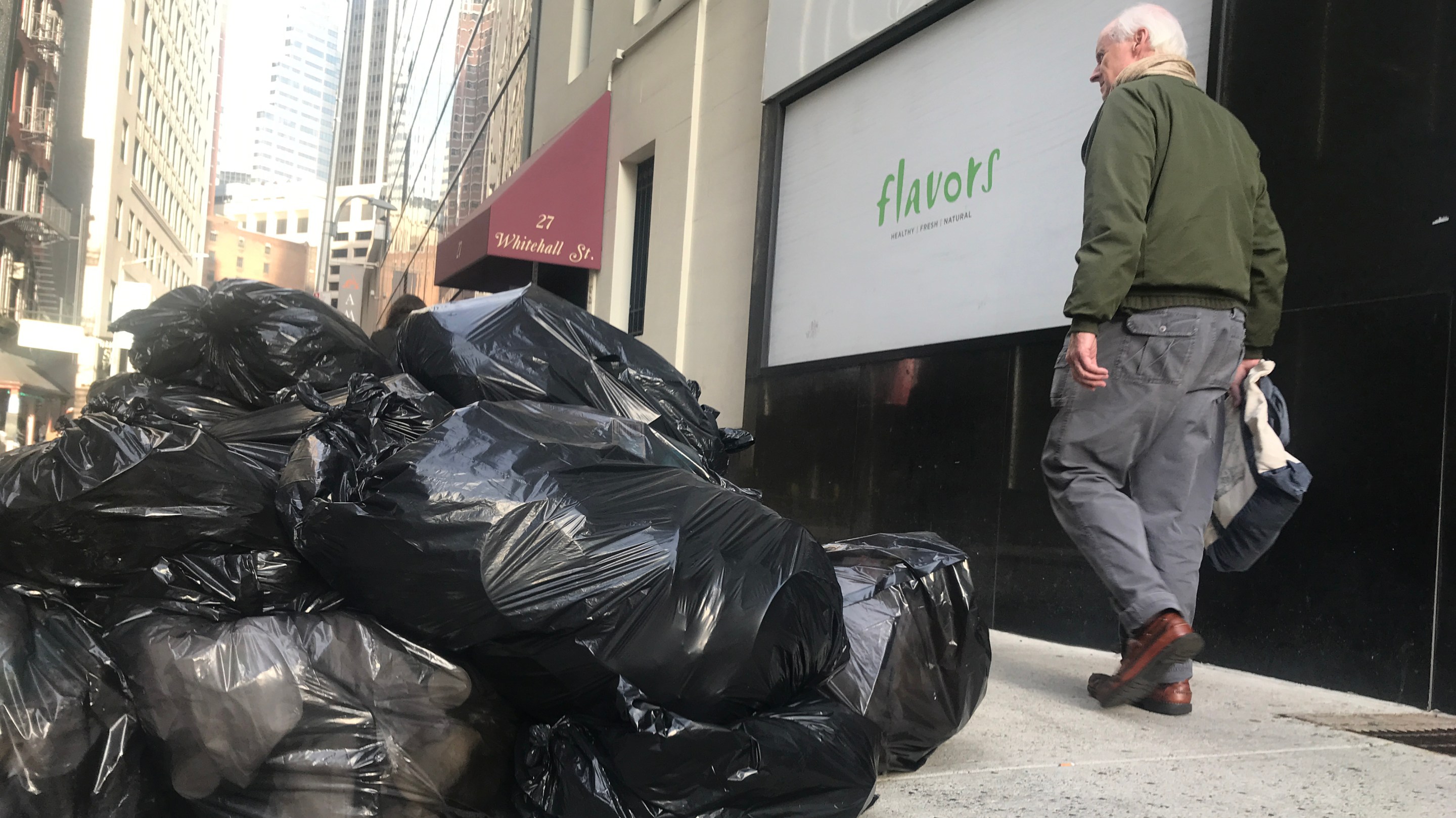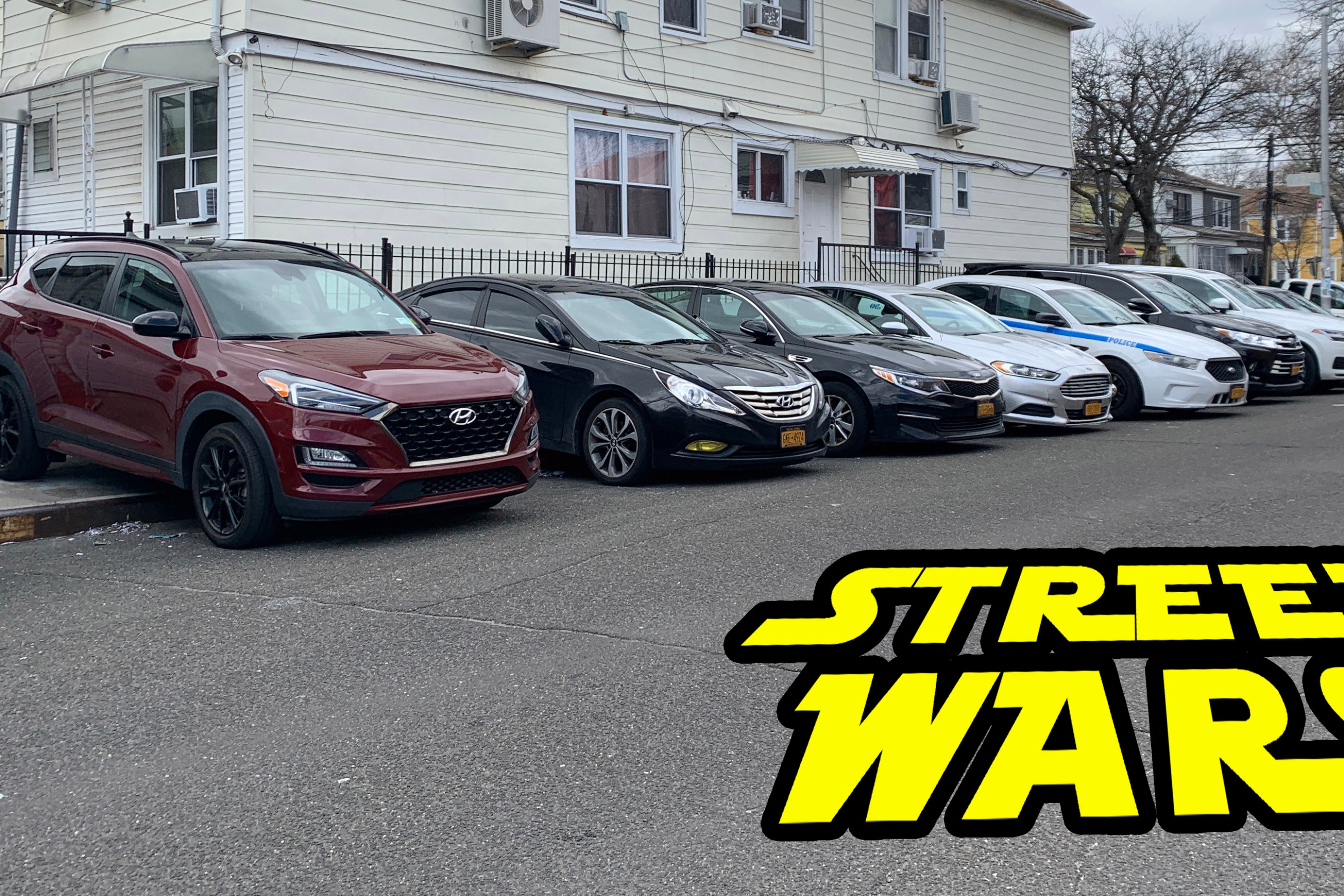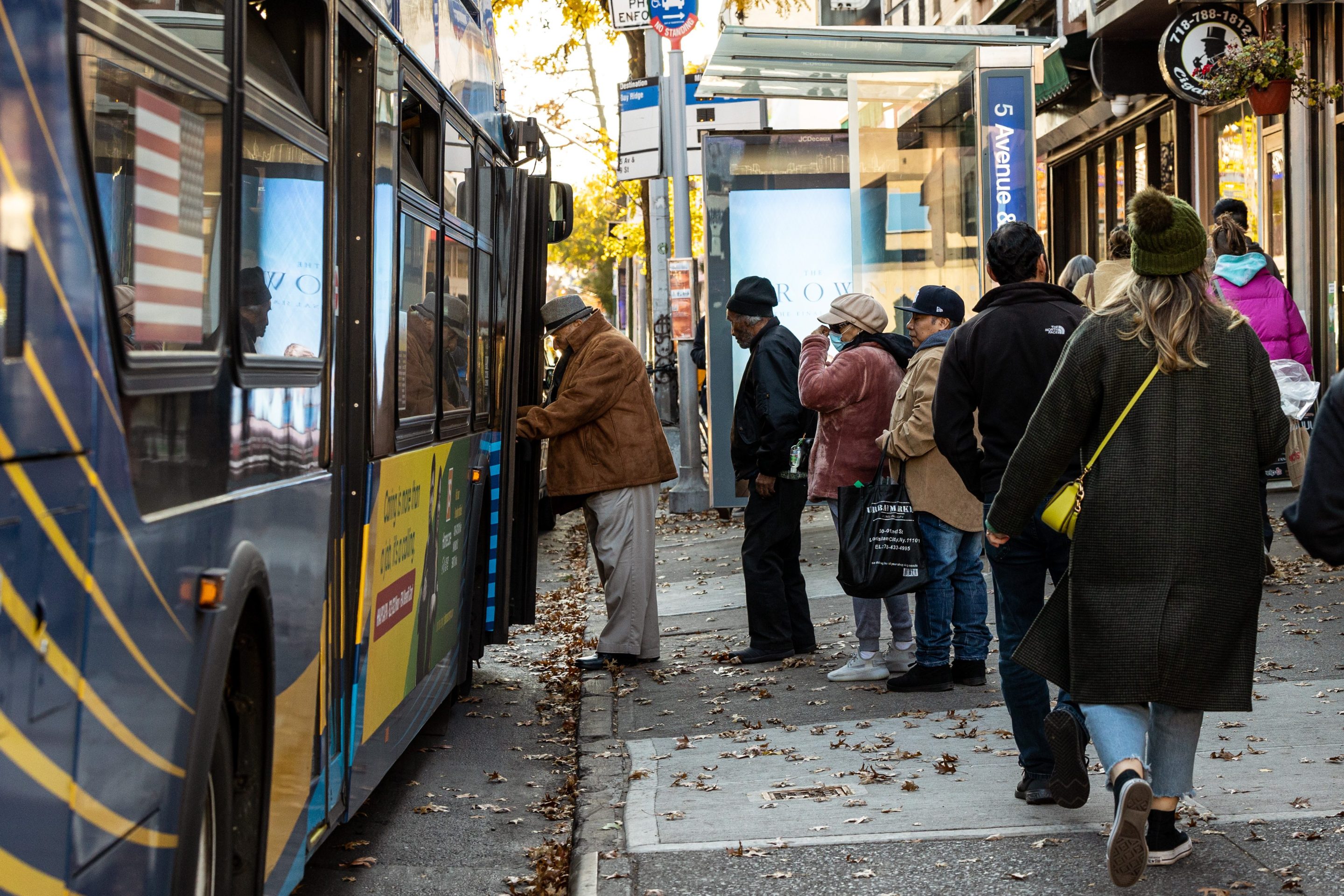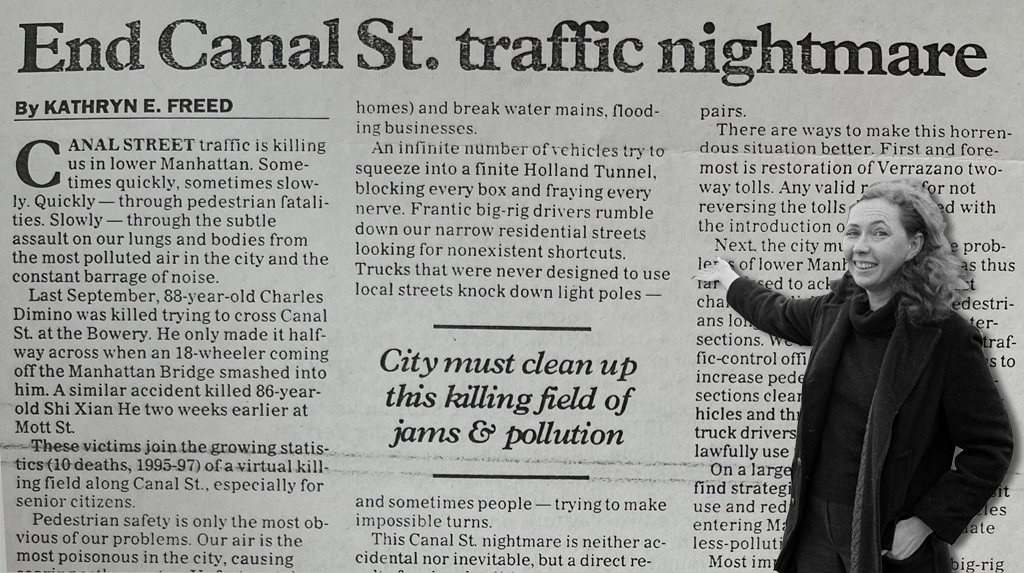New York’s Strongest certainly aren't the Boldest.
City officials hailed new commercial trash rules on Wednesday that will remove smelly, leaking, and unsightly black garbage bags from sidewalks — but the gross trash will simply be placed in containers that will still be in the way of pedestrians and those using wheelchairs and strollers, who will remain second-class roadway users, advocates said.
The new containerization program is part of the Adams Administration’s ongoing “War on Rats,” but advocates called it "insulting" that trash would still be on the sidewalk, rather than in the curbside lane on city roadways, currently serving only as storage spaces for millions of privately owned vehicles.
“We are livid about this provision, which is further reducing the space for ADA, for pedestrians walking, and indeed which is applied to businesses in a very, very congested pedestrian district where a lot of restaurants are,” said Christine Berthet, who worked on an earlier containerization test with DSNY and is a founder of the pedestrian advocacy group CHEKPEDS. “We vigorously oppose this part of the proposal, which is continuing to erode the space for pedestrians.”
And if a restaurant operates a sidewalk cafe, Berthet added, it’s even less clear where its trash-filled containers will go to stay out of the way of pedestrians.
“Where are the containers going if you have a sidewalk cafe? It’s just opening a huge can of worms — literally,” she said. “So insulting.”
Mayor Adams and the Department of Sanitation said the new initiative will require the city’s nearly 40,000 food establishment businesses to dispose of their trash in 30-to-96 gallon containers, rather than those notoriously noxious plastic bags, starting on Aug. 1. Chain stores with five or more locations that don’t sell food, like pharmacies and cell phone stores, will similarly be subject to the new rules later this summer or early fall, as part of the second phase of the program. And businesses will have a roughly one- to three-month warning period to comply before the city starts issuing tickets.
“New York City used to be known for our mean streets, but, going forward, we’re going to be known for our clean streets,” Adams said inside City Hall. "[This] will ... eliminate the mountains of food waste piled up on bags on our sidewalks — making our streets cleaner for New Yorkers and less appetizing for the rats.”
Trash City no more https://t.co/4vOuKSV6XY pic.twitter.com/ZfROsdnYE3
— Julianne Cuba (@Julcuba) June 28, 2023
The only regulation as part of the new initiative mandates that the mom-and-pop shops store their containers within three feet of their property line, or preferably inside until they’re ready to be picked up by the private carter assigned to that business, the DSNY said.
But in sections of the city where the entire sidewalk itself measures no more than three feet, it’s unclear where those containers will go if the establishment lacks room for them inside.
“We hope they store it as close to the business as possible,” said DSNY spokesman Joshua Goodman, who added that the agency will continue to summons businesses that block the sidewalk.
He defended the containerization program amid charges by advocates that the trash should have inconvenienced drivers rather than pedestrians.
“[The containers] will go in the same locations where horrible, smelly black bags of trash go right now," he said. "Instead, there will be clean and beautiful containers, making use of the sidewalks far easier for pedestrians.”
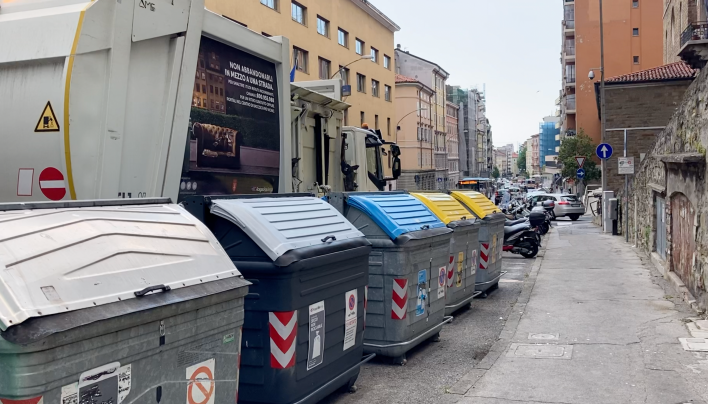
Businesses do have the option to use existing curbside parking space to store their containers as part of the city’s Clean Curbs initiative — a small application-based program managed by both DSNY and the Department of Transportation. The program currently exists at only 50 locations across the five boroughs, mostly run by business improvement districts, according to the Sanitation Department.
But that is a drop in the bucket compared to the amount of public space commandeered by Big Auto.
“We absolutely should be pursuing containerization, but ... the curb lane is right there. Otherwise, we’re just replacing one sidewalk nuisance with another, more visually pleasing, one,” said Sara Lind, Co-Executive Director of Open Plans (a sister organization of Streetsblog). “Our near total deference to cars at the curb makes us blind to opportunities for reform. There is so much underutilized space, if only we were bold enough to use it.”
Eric McClure, the executive director of StreetsPAC, called the new program "a good step" in the war against rats, but added that the program "will do nothing to address the mobility challenges that our waste system presents to people in wheelchairs, the elderly, and the infirm."
"We should seize the opportunity presented by these new commercial waste rules to move trash off the sidewalks and into the curb lane to free up sidewalk space," he added. "There are many cities around the world that have figured this out, and New York should be learning from their examples."
